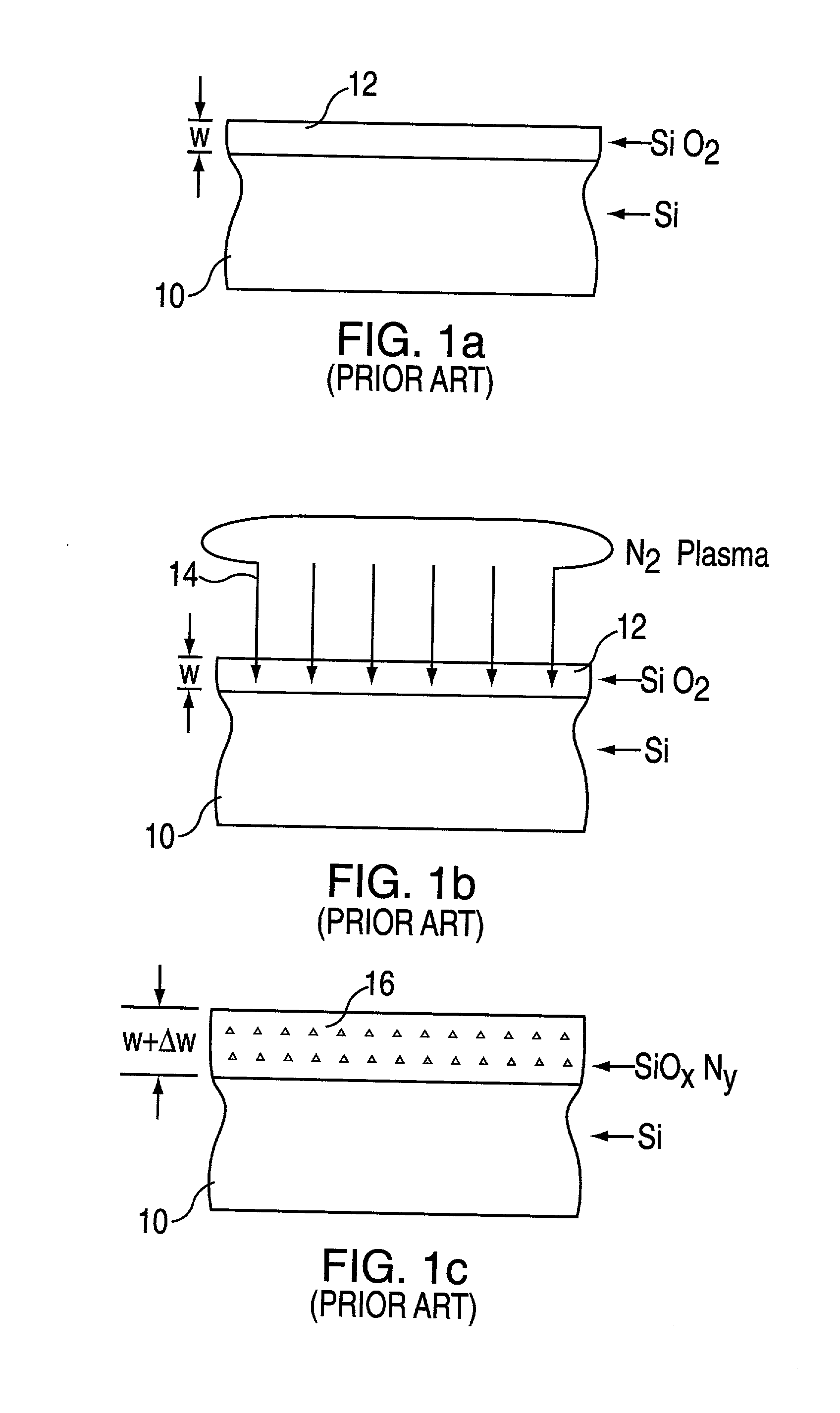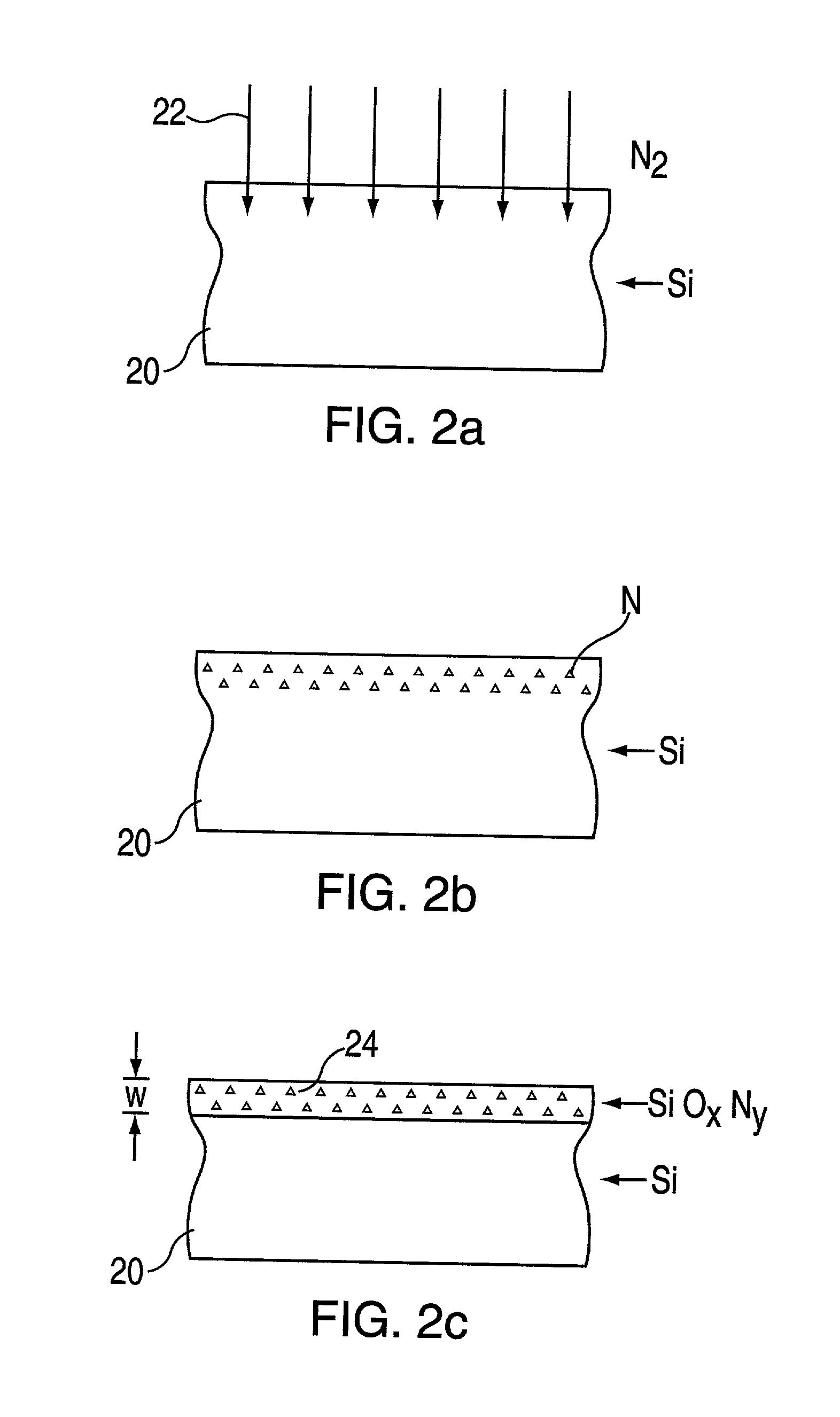Method for improved plasma nitridation of ultra thin gate dielectrics
a gate dielectric and ultra-thin technology, applied in the field of semiconductor processing, can solve the problems of inability to accept the thickness of the gate dielectric, affecting the overall uniformity of the film thickness, and the non-uniform distribution of nitrogen atoms therein
- Summary
- Abstract
- Description
- Claims
- Application Information
AI Technical Summary
Benefits of technology
Problems solved by technology
Method used
Image
Examples
Embodiment Construction
[0016] Referring initially to FIGS. 1(a) through 1(c), a known process of nitriding a gate oxide layer is illustrated. First, a silicon substrate 10 is subjected to oxidation, such as by heating the substrate 10 in a oxygenated environment, thereby forming an insulating oxide layer 12 of SiO.sub.2. As discussed previously, the dielectric performance of the oxide layer 12 becomes increasingly important as gate thicknesses shrink into the deep sub-micron dimensions. In order to improve the dielectric constant of the oxide layer 12 to achieve lower leakage current per unit capacitance, excited nitrogen atoms are introduced into the oxide layer by a process known as Remote Plasma Nitridation (RPN), represented by lines 14 in FIG. 1(b). As a result of the RPN process, the oxide layer 12 is converted to a silicon oxynitride layer 16 having the general chemical composition SiO.sub.xN.sub.y, as shown in FIG. 1 (c).
[0017] While the oxynitride layer 16 has a higher dielectric constant than th...
PUM
 Login to View More
Login to View More Abstract
Description
Claims
Application Information
 Login to View More
Login to View More - R&D
- Intellectual Property
- Life Sciences
- Materials
- Tech Scout
- Unparalleled Data Quality
- Higher Quality Content
- 60% Fewer Hallucinations
Browse by: Latest US Patents, China's latest patents, Technical Efficacy Thesaurus, Application Domain, Technology Topic, Popular Technical Reports.
© 2025 PatSnap. All rights reserved.Legal|Privacy policy|Modern Slavery Act Transparency Statement|Sitemap|About US| Contact US: help@patsnap.com



